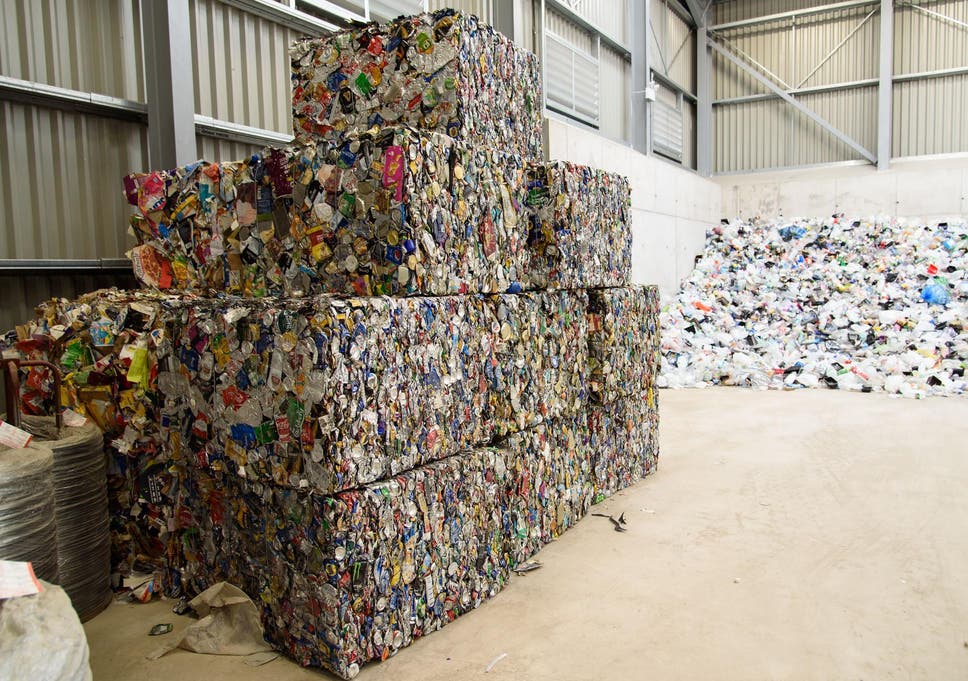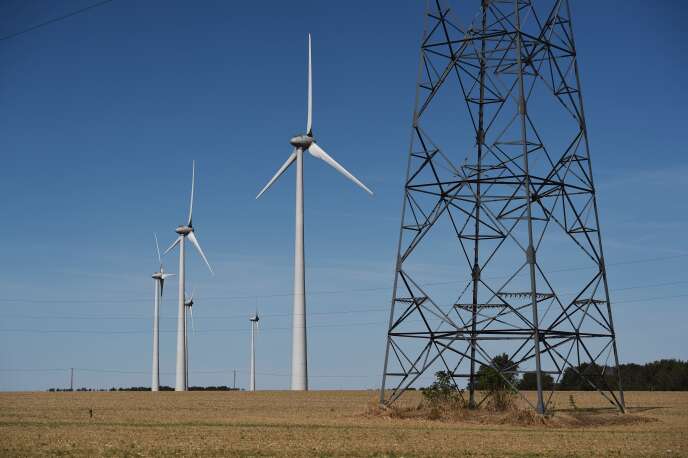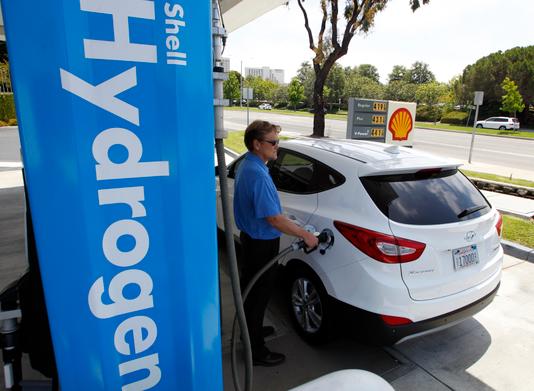sábado, 29 de diciembre de 2018
jueves, 20 de diciembre de 2018
Businesses may pay to recycle their own waste in United Kingdom

Businesses in England may be forced to foot the bill for recycling or disposing their packaging waste under a landmark government strategy.
Currently taxpayers by way of local councils must pay the £1bn it costs to process this rubbish, with supermarkets and big corporations only contributing around 10 per cent of the money required.
Read more at:https://www.independent.co.uk/news/business/recycling-waste-strategy-government-businesses-pay-plastic-pollution-environment-a8687656.html
miércoles, 19 de diciembre de 2018
Single-use plastic items will be banned in European Union by 2021

Single-use plastic items such as plates, cutlery, straws, balloon sticks or cotton buds, will be banned in the EU under plans adopted on Wednesday.
MEPs added to this list of plastics banned from the EU market from 2021: products made of oxo-degradable plastics, such as bags or packaging and fast-food containers made of expanded polystyrene.
Read more at:http://www.europarl.europa.eu/news/en/press-room/20181018IPR16524/plastic-oceans-meps-back-eu-ban-on-throwaway-plastics-by-2021
https://www.lemonde.fr/planete/article/2018/12/19/l-union-europeenne-conclut-un-accord-sur-l-interdiction-des-plastiques-a-usage-unique_5399945_3244.html
lunes, 17 de diciembre de 2018
miércoles, 14 de noviembre de 2018
Higher electrification has a negligible effect on carbon emissions without stronger increase of renewable energies

Electricity markets are undergoing a unique transformation with higher demand brought by the digital economy, electric vehicles and other technological change. As part of its deep-dive into the electricity sector this year, WEO 2018 also examines what impact of higher electrification in transportation, buildings and industry. The analysis finds that higher electrification would lead to a peak in oil demand by 2030, and reduce harmful local air pollutant. But it would have a negligible impact on carbon emissions without stronger efforts to increase the share of renewables and low-carbon sources of power.
viernes, 2 de noviembre de 2018
93% of the world’s children breathe toxic air causing the death of 600000 every year
Every day around 93% of the world’s children under the age of 15 years (1.8 billion children) breathe air that is so polluted it puts their health and development at serious risk. Tragically, many of them die: WHO estimates that in 2016, 600,000 children died from acute lower respiratory infections caused by polluted air.
It reveals that when pregnant women are exposed to polluted air, they are more likely to give birth prematurely, and have small, low birth-weight children. Air pollution also impacts neurodevelopment and cognitive ability and can trigger asthma, and childhood cancer. Children who have been exposed to high levels of air pollution may be at greater risk for chronic diseases such as cardiovascular disease later in life
One reason why children are particularly vulnerable to the effects of air pollution is that they breathe more rapidly than adults and so absorb more pollutants.
They also live closer to the ground, where some pollutants reach peak concentrations – at a time when their brains and bodies are still developing.
Newborns and young children are also more susceptible to household air pollution in homes that regularly use polluting fuels and technologies for cooking, heating and lighting
“Air Pollution is stunting our children’s brains, affecting their health in more ways than we suspected. But there are many straight-forward ways to reduce emissions of dangerous pollutants,” says Dr Maria Neira, Director, Department of Public Health, Environmental and Social Determinants of Health at WHO.
“WHO is supporting implementation of health-wise policy measures like accelerating the switch to clean cooking and heating fuels and technologies, promoting the use of cleaner transport, energy-efficient housing and urban planning. We are preparing the ground for low emission power generation, cleaner, safer industrial technologies and better municipal waste management, ” she added.
Key findings:
- Air pollution affects neurodevelopment, leading to lower cognitive test outcomes, negatively affecting mental and motor development.
- Air pollution is damaging children’s lung function, even at lower levels of exposures
- Globally, 93% of the world’s children under 15 years of age are exposed to ambient fine particulate matter (PM2.5) levels above WHO air quality guidelines, which include the 630 million of children under 5 years of age, and 1.8 billion of children under 15 years
- In low- and middle-income countries around the world, 98% of all children under 5 are exposed to PM2.5 levels above WHO air quality guidelines. In comparison, in high-income countries, 52% of children under 5 are exposed to levels above WHO air quality guidelines.
- More than 40% of the world’s population – which includes 1 billion children under 15 - is exposed to high levels of household air pollution from mainly cooking with polluting technologies and fuels.
- About 600’000 deaths in children under 15 years of age were attributed to the joint effects of ambient and household air pollution in 2016.
- Together, household air pollution from cooking and ambient (outside) air pollution cause more than 50% of acute lower respiratory infections in children under 5 years of age in low- and middle-income countries.
- Air pollution is one of the leading threats to child health, accounting for almost 1 in 10 deaths in children under five years of age.
- Action by the health sector to inform, educate, provide resources to health professionals, and engage in inter-sectoral policy making.
- Implementation of policies to reduce air pollution: All countries should work towards meeting WHO global air quality guidelines to enhance the health and safety of children. To achieve this, governments should adopt such measures as reducing the over-dependence on fossil fuels in the global energy mix, investing in improvements in energy efficiency and facilitating the uptake of renewable energy sources. Better waste management can reduce the amount of waste that is burned within communities and thereby reducing ‘community air pollution’. The exclusive use of clean technologies and fuels for household cooking, heating and lighting activities can drastically improve the air quality within homes and in the surrounding community.
- Steps to minimize children’s exposure to polluted air: Schools and playgrounds should be located away from major sources of air pollution like busy roads, factories and power plants.
BreatheLife air pollution campaign: BreatheLife is a partnership of WHO, UN Environment and the Climate and Clean Air Coalition to Reduce Short-lived Climate Pollutants that aims to increase awareness and action on air pollution by governments and individuals. www.breathelife2030.org
jueves, 1 de noviembre de 2018
martes, 12 de junio de 2018
Producing Electricity in Roads Paved with Solar Panels in China

The potential appeal of solar roads — modified solar panels that are installed in place of asphalt — is clear. Generating electricity from highways and streets, rather than in fields and deserts packed with solar panels, could conserve a lot of land. Those advantages are particularly important in a place like China, a heavily populated country where demand for energy has risen rapidly.
Because roads run through and around
cities, the electricity could be used practically next door to where it
is generated. That means virtually no power would be lost in
transmission, as can happen with projects in outlying locations. And the
land is essentially free, because roads are needed anyway. Roads must
be resurfaced every few years at great cost, so the installation of
durable solar panels could reduce the price of maintenance.
Solar
roads could also change the driving experience. Electric heating strips
can melt snow that falls on them. Light-emitting diodes embedded in the
surface can provide illuminated signage to direct drivers to exits and
alert them to construction and other traffic hazards.
lunes, 11 de junio de 2018
The Dutch Agriculture Model, Model for Navarra in Spain
Published in Diario de Navarra
El modelo holandés,
un modelo para Navarra
El autor señala que el potente sector agroalimentario navarro podría conseguir
con el modelo holandés el doble de alimentos con la mitad de recursos
Mahmoud M. Rabbani
E L sector agroalimentario
en Navarra
representa un
porcentaje significativo
del producto
interior bruto. Ha
sido desde siempre un pilar fundamental
de la economía y fuente
de creación de puestos de trabajo
y riqueza, promoviendo otros
subsectores productivos. Este
sector se enfrenta al reto de la innovación
con el objetivo de aumentar
su peso económico y contribución
positiva en la lucha contra
el cambio climático. Una
innovación que cubra muchos
ámbitos con el fin de aumentar de
forma sostenible el rendimiento,
el volumen y la calidad en una producción
agroalimentaria competitiva.
El panorama socioeconómico
exige dar un nuevo impulso innovador
en la promoción de este sector
fundamental y básico de la economía
navarra. Muchas veces no
es necesario para ello inventar de
nuevo la rueda para hacer marchar
a mayor velocidad y mejor
rendimiento, sino de adoptar estrategias
y métodos de trabajo
que han dado resultados positivos
sorprendentes en otros lugares
de nuestro mundo globalizado.
Adaptándolas a nuestras particularidades
para que sean efectivas
en su aplicación.
Hablemos de la vía holandesa
como referencia para este
pretendido avance en este
sector donde la innovación
y la investigación
con miras locales y globales
forman el secreto
de su gran éxito.
Holanda, este pequeño
país de 41.543 km2,
parecida a la superficie
de Extremadura, una población
de 17 millones y
una densidad de 411 personas
por km2, se ha convertido en
una gran potencia agrícola. Por
muy extraño que parezca es el
primer exportador mundial de tomates,
de cebollas, de patatas y el
segundo después de Estados Unidos
de productos vegetales en términos
de valor, a pesar de tener
270 veces la superficie de Holanda.
Líderes en la mejora molecular
de cultivos, sin la modificación genética
de organismos vegetales, y
también en la exportación de semillas
a nivel mundial.
Holanda ha puesto los medios,
desde hace dos décadas, al servicio
de una transición hacia una
agricultura sostenible bajo el lema:
“el doble de alimentos con la
mitad de recursos”. Muchos agricultores
holandeses han reducido
desde 2000 su dependencia sobre
el agua en 90%; han eliminado casi
al completo el uso de pesticidas
químicos en plantas en sus invernaderos;
el 30% ha disminuido el
uso global de fertilizantes; y desde
2009 los granjeros holandeses
han cortado el uso de antibióticos
en 60%. Además del reciclaje de los
deshechos de este sector y el uso
de fuentes propios asequibles de
energía para su autoabastecimiento
y aumento en la producción.
El reto dice Ernst van den Ende,
director de Wageningen University
& Research- el punto nodal
del Food Valley, una agrupación
de iniciativas de tecnologías
agrícolas y fincas experimentales,
en una deliberada alusión al Silicon
Valley en California, igualando
el papel académico y espíritu
emprendedor de Stanford University
en el mismo- es que nuestro
planeta debe producir en las
próximas cuatro décadas más de
lo que han producido los agricultores
a lo largo de la historia en los
anteriores 8.000 años.
Esto es porque para 2050, la población
mundial de los 7,5 mil millones
actuales será de 10.000 millones.
Si no se consigue un aumento
notable en el rendimiento
agrícola, acompañado por grandes
descensos en el uso del agua y
los comestibles fósiles, mil millón
o más de personas se enfrentarían
probablemente a la hambruna. El
hambre podría ser el problema
más urgente del siglo 21. Los investigadores
visionarios del Food
Valley creen que han encontrado
soluciones innovadoras, trabajando
en proyectos en más de 140 países.
Una combinación académica
en ciencia vegetal con una comercial
en contratos de investigación
es el modo de trabajo de esta universidad,
para enfrentarse de una
manera económicamente viable a
los desafíos de contribuir en aumentar
la productividad agrícola
con menos recursos dentro de una
agricultura sostenible a nivel
mundial. 45% de sus alumnos graduados
vienen de más de cien países.
Una considerable parte de sus
actividades académicas y de investigación
están enfocados sobre
problemas que afectan a países
pobres, aumentados por las consecuencias
del cambio climático;
es una universidad para el mundo.
Así este pequeño país con la
investigación, innovación y
usando las tecnologías agrícolas
más eficientes en una agricultura
de precisión se ha convertido
en un modelo de referencia para
la agricultura sostenible de
alto rendimiento. Cuando
se trabaja con drones, tecnología
satelital y máquinas
con piloto automático
sorprende aún más. Más
de la mitad de la superficie
del país se utiliza para la
producción agrícola y hortícola,
donde los invernaderos
inteligentes- control
de temperatura, luz,
agua y nutrientes- forman
parte destacable del paisaje
de este pequeño país que como
dice el National Geographic
alimenta al mundo.
Mahmoud M. Rabbani es exprofesor
de la escuela de ingenieros agrónomos
de Villava y de la UPNA y director de
Sustainable development overseas progamme
World’s First Electric Car-Charging Road Opens In Sweden

A road that recharges the batteries of electric vehicles as they drive has opened on the outskirts of Stockholm, Sweden.
The 1.2-mile-long stretch of electrified road was developed by eRoadArlanda – a consortium including vehicle manufacturer DAF, property developers, technology companies and academic institutions.
It employs a system whereby energy is transferred to specially designed cars and trucks from an electrified track in the surface of the road.
A connection to the underneath of the vehicle is made by a movable arm, which automatically detects when the rail is near and lowers to begin charging.
Read more:
https://www.dezeen.com/2018/04/23/electric-car-charging-road-opens-stockholm-sweden/
Suscribirse a:
Entradas (Atom)



